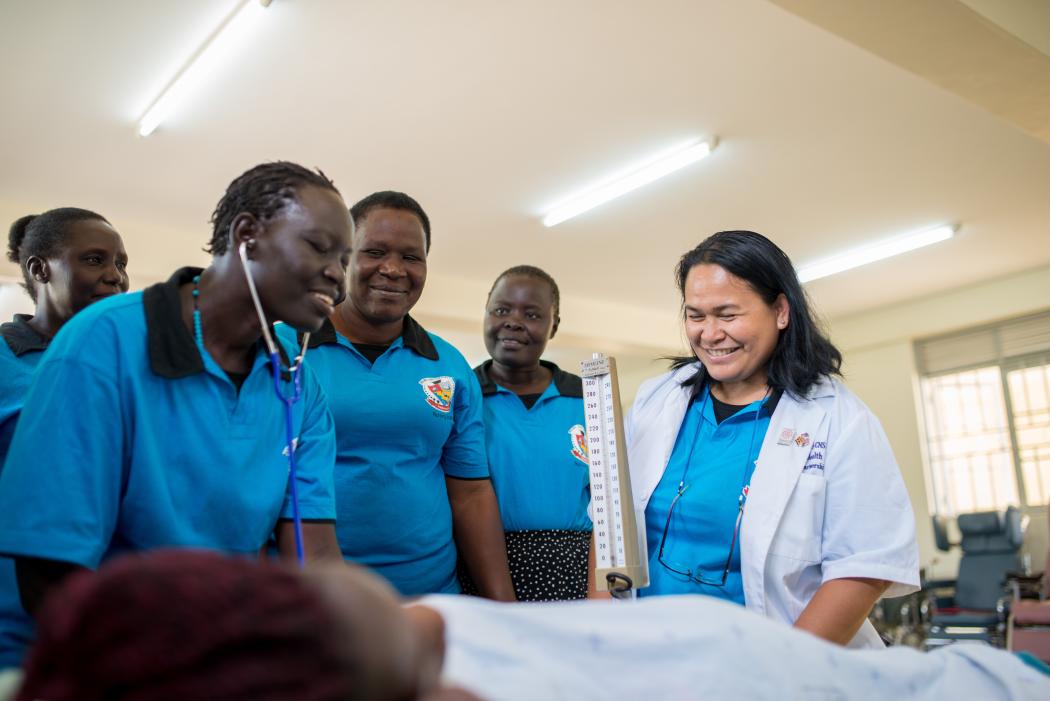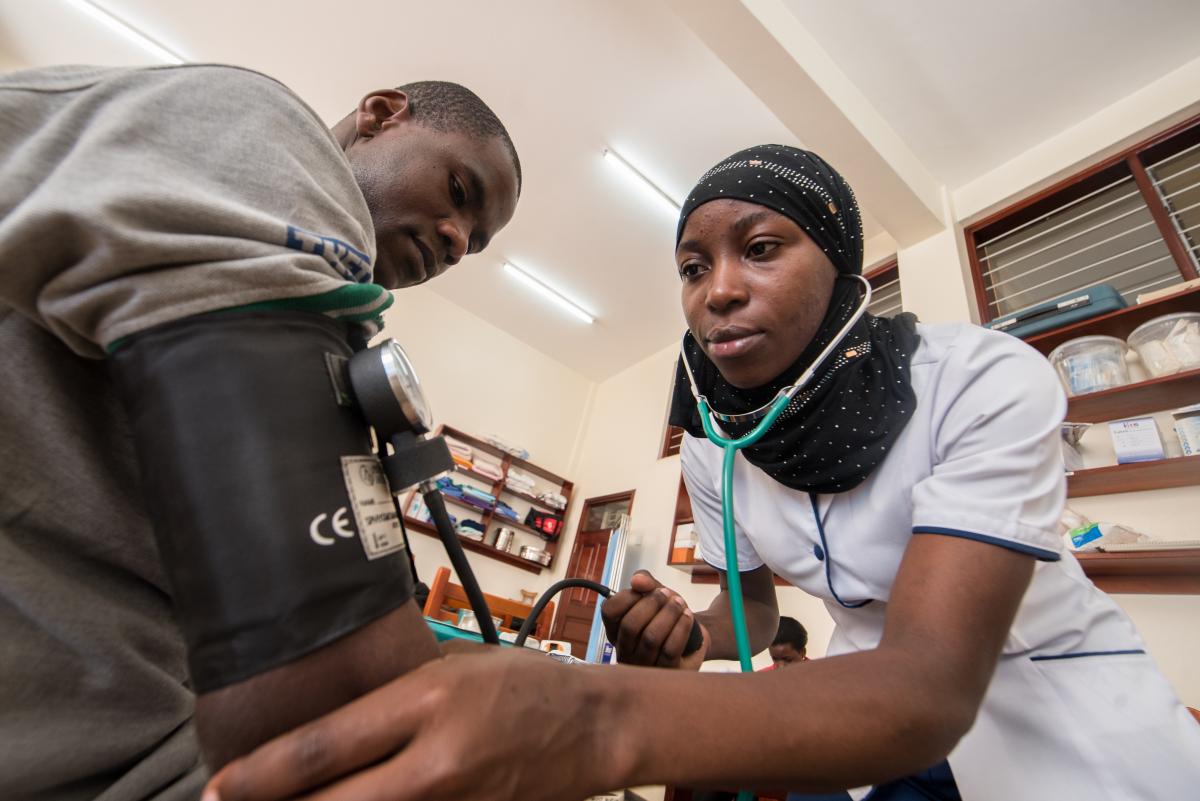It’s Time to Be Impatient, to Achieve Health Equity

Nursing students at Muni University in Uganda during a training session. Photo credit: Seed Global Health
By Dr. Vanessa Kerry, Co-Founder and CEO, Seed Global Health
We live in an extraordinary time. With increasing speed, technology innovations have transformed our world and expanded our horizons in ways that were previously unimaginable. Growing up, the clicking of the typewriter keys and the distinctive ding at the end of each line formed the soundtrack to my homework sessions. Nowadays, I dictate notes and messages to my phone which are then sent into the world. Whereas my parents’ generation previously relied on the assistance of operators to make long distance phone calls, they can now easily communicate with their grandchildren, loved ones, and colleagues across continents through video chat, WhatsApp, and Skype.
Innovation is happening rapidly and enhancing lives daily. Yet, in 2019, this innovation is still not transforming lives evenly. Entire communities and populations are being left behind from this digital age. They are being left behind. Period. It should be absurd that today, when we have made so many advances, there are still millions who live without access to energy, running water, sanitation facilities, or education.
The chasm between not only access to technology but also access to services, and even agency, is growing for too many. It is incredibly visible in health and the gaps in care do not discriminate. The US, for example, has the worst rate of maternal deaths in the developed world. The CDC estimates that 700 to 900 new and expectant mothers die in the U.S. each year and Black mothers in our country die at three to four times the rate of white mothers. In Malawi, largely preventable illnesses like diarrhea, malaria, and pneumonia remain the main causes of child mortality. One in 16 children in Malawi dies before his or her fifth birthday, and two-thirds of these deaths occur during infancy. Both countries, as in many other parts of the world, struggle to provide access to quality and affordable healthcare, delivered by providers who are rooted in, and understand the needs of, the communities where they work.
To date, there has been a piecemeal approach to fixing global health problems. Diseases are tackled vertically, and investments have been made to quick—if important fixes—but which do not wholly solve the problem. Conventional wisdom tells us that change takes time, but I would argue it is time to be impatient. We must challenge ourselves to be intolerant of the perpetuation of the two standards of care that exist in the world today; it results in unnecessary loss of lives and destruction of communities.

Two nursing students at Mbarara University of Science and Technology in Uganda practicing clinical skills in the skills lab. Photo credit: Seed Global Health
We are often looking for a panacea, but technology and innovation by themselves cannot eliminate the health disparities with which many communities grapple. The truth is that many of the solutions to finally close these critical gaps will take long-term investment and time. The urgency lies in beginning those efforts. Building out a complete and strong health workforce is a crucial investment that has the ability to pay dividends, but is unfortunately always slated as “too expensive, too intensive, and too long.” Yet, this investment would deliver quality care, provide ongoing education across the health workforce, problem solve, and ensure that health systems are not ravaged by health crises but respond to them—for the long term.
Such a shift also requires a change in fundamental values and priority. One where health is a requisite and not a priority if one is so lucky. Why? Years of data have shown the power of good health to improve communities’ well-being, boost countries’ economic prosperity, enhance political stability, and strengthen global security. The evidence is clear, healthier individuals result in socially, economically, and politically healthier societies. While individual choices will influence our health, the environments in which we live, work, play, and learn determine our health and well-being far more significantly than we have acknowledged. Health is as fundamental as food and water to not only survive but also to thrive.
This week, the global health’s collective attention is focused on the World Health Assembly, where one of the top agenda items is Universal Health Coverage. Many countries face challenges, ranging from a paucity in health workers to lack of financing for equipping health facilities, that hinder progress towards ensuring health for all. We know that the status of health across the globe cannot be transformed by a single individual, community, organization, or innovation. To achieve health equity, we need to rally together to address the barriers to health; invest in systems’ ability to deliver comprehensive, quality care where the needs are highest; and ensure that everyone has access to the basic conditions for good health—including education, job opportunities, housing, affordable transportation, healthy foods, and quality healthcare services. There is an urgency and need for multi-sectoral collaboration to create social and physical environments that promote health for all. This concerted effort is critical to catalyzing and driving the large-scale change that we need today. Health must be a fundamental priority for all and investment in it can be an important and urgent equalizer.
